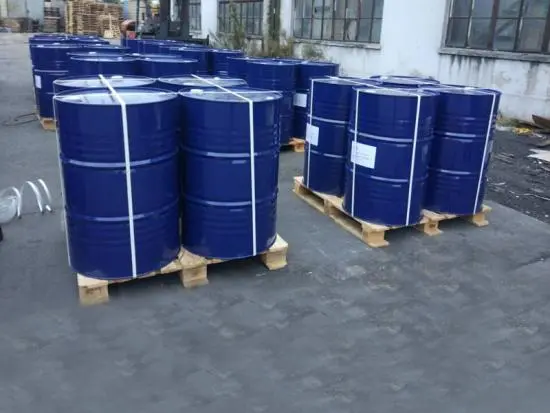Petrochemical products are everywhere in our lives
2025-09-29
Petrochemicals are relevant to our lives beyond fueling private cars. Thousands of petroleum-derived chemical products are inextricably linked to our daily lives, encompassing everything from clothing and food to shelter and transportation. According to a UK petrochemical website, the average resident in industrialized countries directly consumes 1,200 gallons (approximately 5 tons) of petroleum-based petrochemicals annually.
Equipment for a "Thousand-Mile Journey"
Modern transportation, such as cars, trains, ships, and airplanes, brings convenience and enjoyment to people, thanks to the fuel they power. Statistics show that fuel oil consumption by various transportation vehicles accounts for approximately 72% of the total value of petrochemical products consumed. Petrochemicals, such as plastics, rubber, coatings, and adhesives, are widely used in transportation. Using synthetic rubber instead of natural rubber in tires reduces manufacturing costs and improves performance. For example, a Boeing 787 commercial aircraft is composed of over 50% reinforced plastics, resulting in 20% fuel savings compared to comparable aircraft. Plastics account for approximately 7% to 20% of a car's weight. Every 10% reduction in a car's weight reduces fuel consumption by 6% to 8%. Various lubricants and other supporting materials consume significant amounts of petrochemicals. Global lubricant production is approximately 20 million tons, with China producing about 1.8 million tons.
For example, the following is a petrochemical product from Xiamen Aeco Chemical Industrial: Methylcyclopentadienyl Manganese Tricarbonyl.
| Category | Parameter Item | Parameter Value |
|---|---|---|
| Features | Type | Economical additive |
| Function | Significantly increases gasoline octane rating | |
| Effect | Reduces harmful components in exhaust gases | |
| Technical Collaboration | Developed in cooperation with Shanghai Jiao Tong University | |
| Performance Evaluation | Excellent performance and significant effects, clean gasoline anti-knock agent | |
| Specifications | Appearance | Transparent orange liquid |
| Manganese Content | 15.1%±0.5% | |
| Mercaptan Content | 62.0%±2.1% | |
| Freezing Point | Below -18°C | |
| Flash Point | Above 42°C | |
| Density (20°C) g/cm³ | 1.000-1.200 | |
| Water Content | Maximum 500ppm | |
| Packaging | Packaging Method | UN steel drum |
| Net Weight per Drum | 200kg | |
| Applications | Application Areas | Gasoline anti-knock agent, gasoline standard improver, unleaded gasoline anti-knock agent, gasoline octane rating improver, standard improver, octane rating booster |
Supplying a "safe and comfortable life"
After the packaging industry, the construction industry is the largest user of plastics. Plastic floor tiles, carpets, plastic pipes, wall panels, and paint are also petrochemical products. Environmentally friendly composite materials such as wood-plastic and aluminum-plastic have largely replaced wood and metal. In addition to building materials, furniture and household items are also dominated by petrochemicals. The use of natural gas has freed people from the smoky, humid days of burning coal and wood. The clean air in Chinese cities today is largely due to the use of natural gas instead of coal and wood as fuel.
The Foundation of "High-Tech"
Plastics and adhesives derived from petrochemicals are used in fundamental components of computers and electronic products, such as computer chips, computer screens, mobile phone screens, substrates for various electronic modules, insulation materials, solar panels, and personal credit cards. Without petrochemicals, there would be no modern electronics industry. With the development of high-tech industries, the applications of petrochemicals are becoming increasingly widespread and diverse.
Guaranteeing "Delicious Food"
Food is a fundamental need for human survival. The petrochemical industry has improved the production efficiency of agricultural and livestock products. Nitrogen fertilizers from petrochemicals account for 80% of all chemical fertilizers. The use of chemical fertilizers and agricultural chemicals has increased grain production and agricultural productivity by at least 40%. Even the plastic wrap used in daily life, as well as various food packaging boxes and bottles, are made from synthetic resins. Furthermore, pharmaceuticals used for medical purposes, such as aspirin, also come from petrochemicals.
The Raw Materials of "Fine Clothing"
Petrochemicals have had a significant impact on human clothing, particularly the revolution in clothing materials brought about by synthetic fibers and artificial leather. Since China began developing its synthetic fiber industry in 1959, it has produced a wide range of affordable, high-quality synthetic fiber clothing materials, including acrylic, polyester, vinylon, and nylon, addressing the clothing needs of the world's most populous nation. Natural leather, due to resource constraints, animal protection, and processing technology, is expensive to use and has a certain impact on the ecological environment. Artificial leather was the first leather substitute invented. It is made by calendering and laminating polyvinyl chloride (PVC) with plasticizers and other additives onto cloth. It offers advantages such as low price, rich colors, and a variety of patterns. Polyurethane (PU) artificial leather and composite artificial leather are newer generations of PVC artificial leather, with a texture closer to leather. PU artificial leather is suitable for making leather shoes, bags, jackets, sofa cushions, and more.
Petrochemical products are so closely integrated into our daily lives that their product range is so vast that it is almost impossible for ordinary people to keep track of them all. With the advancement of digitalization and intelligence, our connection with petrochemical products is not becoming increasingly distant, but rather closer. Petrochemical products will continue to participate in our daily lives in various new forms, promoting the modernization of human society.
 English
English Español
Español  Português
Português  русский
русский  Français
Français  日本語
日本語  Deutsch
Deutsch  tiếng Việt
tiếng Việt  Italiano
Italiano  Nederlands
Nederlands  ภาษาไทย
ภาษาไทย  Polski
Polski  한국어
한국어  Svenska
Svenska  magyar
magyar  Dansk
Dansk  Suomi
Suomi  العربية
العربية  český
český  ελληνικά
ελληνικά 



